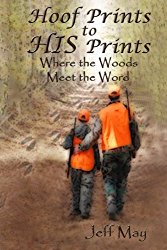Those words stung hard as they slammed me deep in my chest. The look of disappointment in her eyes and the sword of truth from her tongue hit its mark. “I thought you were a Christian.” I thought I was though it was obvious I didn’t act like one. Remember, saying “God knows my heart” to a concern does not address the fruit in your life that led someone to express that concern. Perhaps if you knew your heart as God knew your heart you wouldn’t be doing some of the things that cause godly friends to be concerned.
Those words stung hard as they slammed me deep in my chest. The look of disappointment in her eyes and the sword of truth from her tongue hit its mark. “I thought you were a Christian.” I thought I was though it was obvious I didn’t act like one.
This scene took place after a trip home from church to the college I attended. I usually had students ride with me to the church I attended about 20 minutes away. This Sunday morning there were a few friends and this girl who I didn’t know well but needed a ride. During this time Purple Rain by Prince was popular and I had both the soundtrack and a loud stereo system. This was probably the tamest of Prince’s work but that is not a high standard. As we were driving home we were blasting the tape (yes kids, a cassette) and she was obviously not enjoying it. My friends were enjoying it, singing loudly and I recall her voicing some displeasure and requesting a music change. Being an arrogant twit at times (mostly to cover my anxiety and low self-esteem) and in a somewhat dark place emotionally, I turned it louder and made some smart remarks. A particularly rude song came on and I didn’t change it and was more of a jerk.
was obviously not enjoying it. My friends were enjoying it, singing loudly and I recall her voicing some displeasure and requesting a music change. Being an arrogant twit at times (mostly to cover my anxiety and low self-esteem) and in a somewhat dark place emotionally, I turned it louder and made some smart remarks. A particularly rude song came on and I didn’t change it and was more of a jerk.
The short trip was over and we made it to campus. We got out of the car, she came around, cocked her head as if asking a question and in a tone that was neither hurt or angry, but matter-of-fact said, “I thought you were a Christian.” I don’t remember if I mumbled an apology then but I remember feeling the impact of the much needed rebuke.
How I didn’t react
I could have bowed up and said, “Are you perfect?” I could have cited anything I knew about her (I didn’t know her well) that might indicate that at sometime she didn’t make a perfect choice. Then I could have said that we are all broken and that none of us are going to live perfect and the grace of God would cover our sins. However, whether she was perfect or not didn’t matter to my sin under discussion and we shouldn’t continue in sin that grace might abound.
I could have taken her to task for judging me. “Judge not…” I could quote and certainly show her the flaw in trying to tell me how to live my life. Yet I would have to hope that she wouldn’t quote the rest of the passage or other passages that encourage Christians to make righteous judgment and to make attempts to rescue our fellow Christians who are wandering away from God, which requires judgment based on the fruits of their lives we can see that sprout from the heart that only God sees. I was a jerk and she was being a loving fellow Christian asking me to consider how my actions contradicted my claim.
I didn’t ignore her.
How I did react
I don’t remember who it was but I remember what she said even now about 30 years later. I thought about my actions and her words and knew she was right. I don’t remember if I apologized to her then but I believe I apologized to her later (or both times). I remember feeling sorrowful for my sinful behavior, conceit, and not being considerate to her. I resolved to make better choices and ultimately made different friends that were more encouraging of what was right.
I never forgot the words. Maybe she knows who she is and remembers the event and the conversation and might read these words. If so, she can reach out or remain anonymous but she can know that I never forgot her loving rebuke and I think about it when I am tempted to act in a way that does not represent Christ or glorify the Father. For this I am grateful.
How will you react?
How will you react when someone sends you a text, message, email, calls you, or confronts you in person about something they think you are doing wrong?
- Are you going to turn on them for trying to turn you back to the right way?
- If you think you are not in the wrong, are you going to calmly discuss this with them with an open heart and open Bible to determine whether you are in the wrong or not?
- Will you be sympathetic if they didn’t have all of the information or perhaps jumped to conclusions to give them the whole story (perhaps helping them to have better judgment) but thanking them for having the courage to confront you about it?
- Are you going a berate them and flame them for daring to say a negative thing about you (note: this is a good way to drive away anyone who can help you be a better person, even if their concern is wrong)?
Remember, saying “God knows my heart” to a concern does not address the fruit in your life that led someone to express that concern. Perhaps if you knew your heart as God knew your heart you wouldn’t be doing some of the things that cause godly friends to be concerned. Your friends could be wrong, but you could be wrong.
I’m thankful I listened to her and that I had someone who cared for my soul more than they cared for my feelings.




 was obviously not enjoying it. My friends were enjoying it, singing loudly and I recall her voicing some displeasure and requesting a music change. Being an arrogant twit at times (mostly to cover my anxiety and low self-esteem) and in a somewhat dark place emotionally, I turned it louder and made some smart remarks. A particularly rude song came on and I didn’t change it and was more of a jerk.
was obviously not enjoying it. My friends were enjoying it, singing loudly and I recall her voicing some displeasure and requesting a music change. Being an arrogant twit at times (mostly to cover my anxiety and low self-esteem) and in a somewhat dark place emotionally, I turned it louder and made some smart remarks. A particularly rude song came on and I didn’t change it and was more of a jerk.
